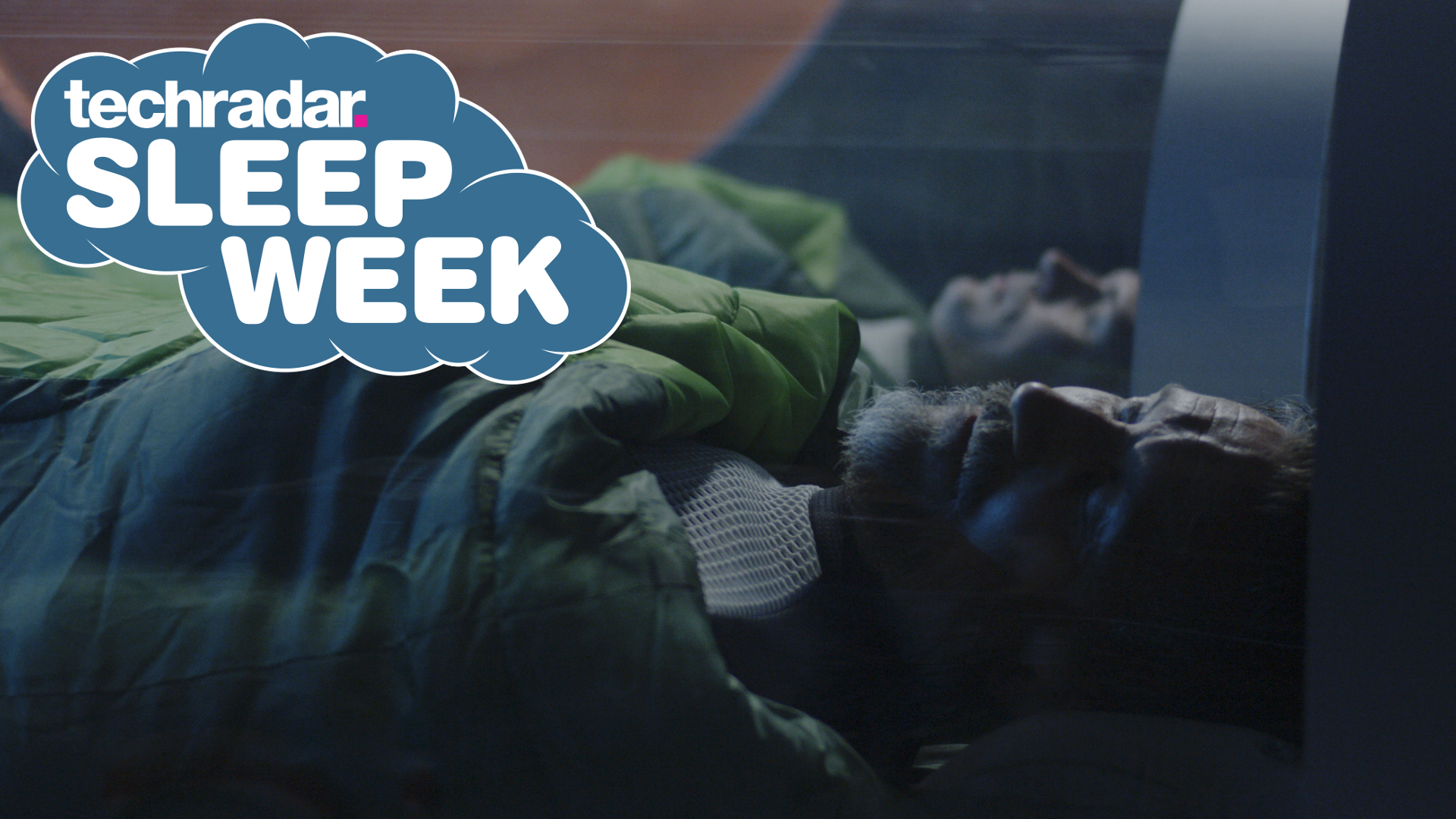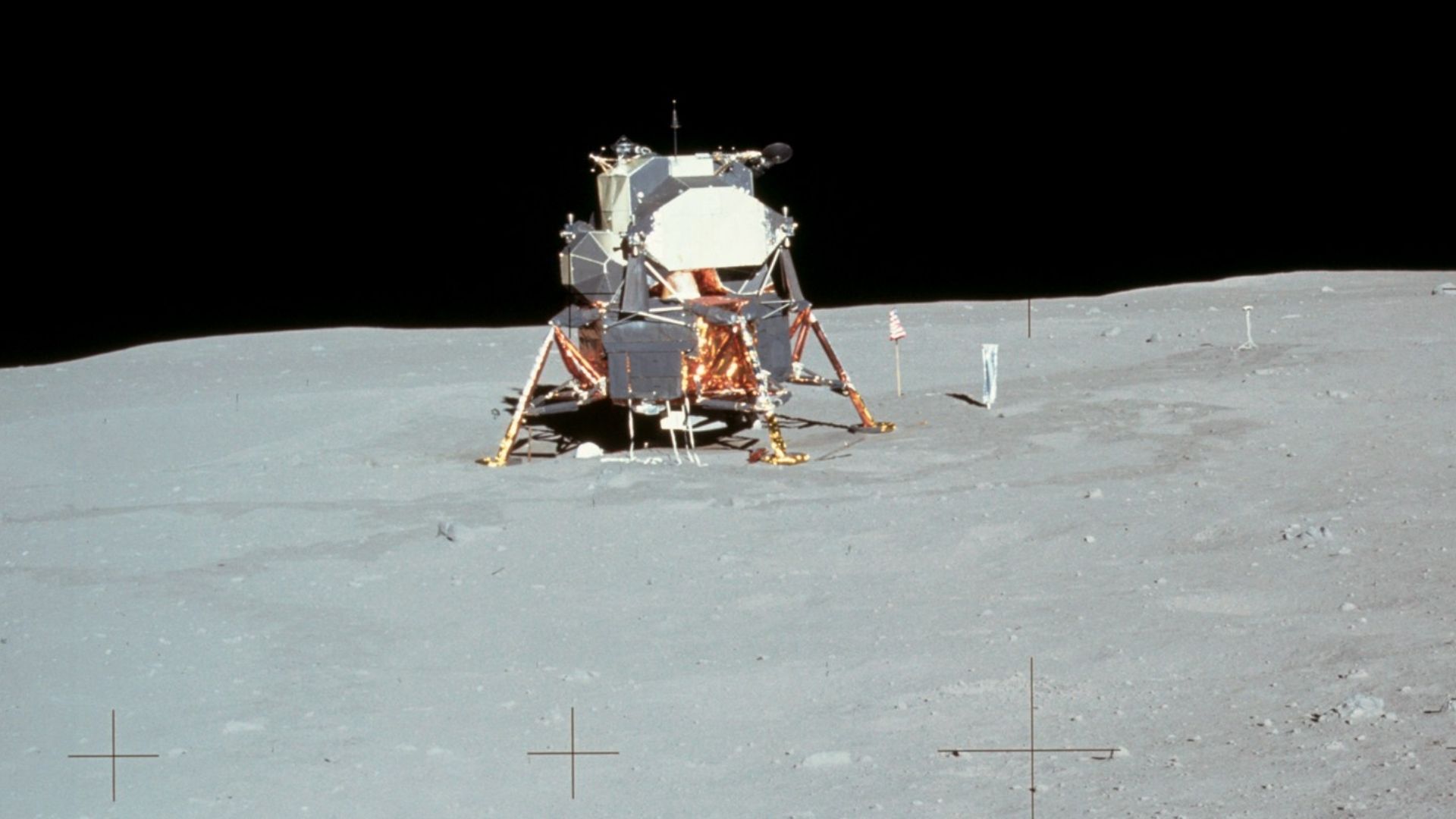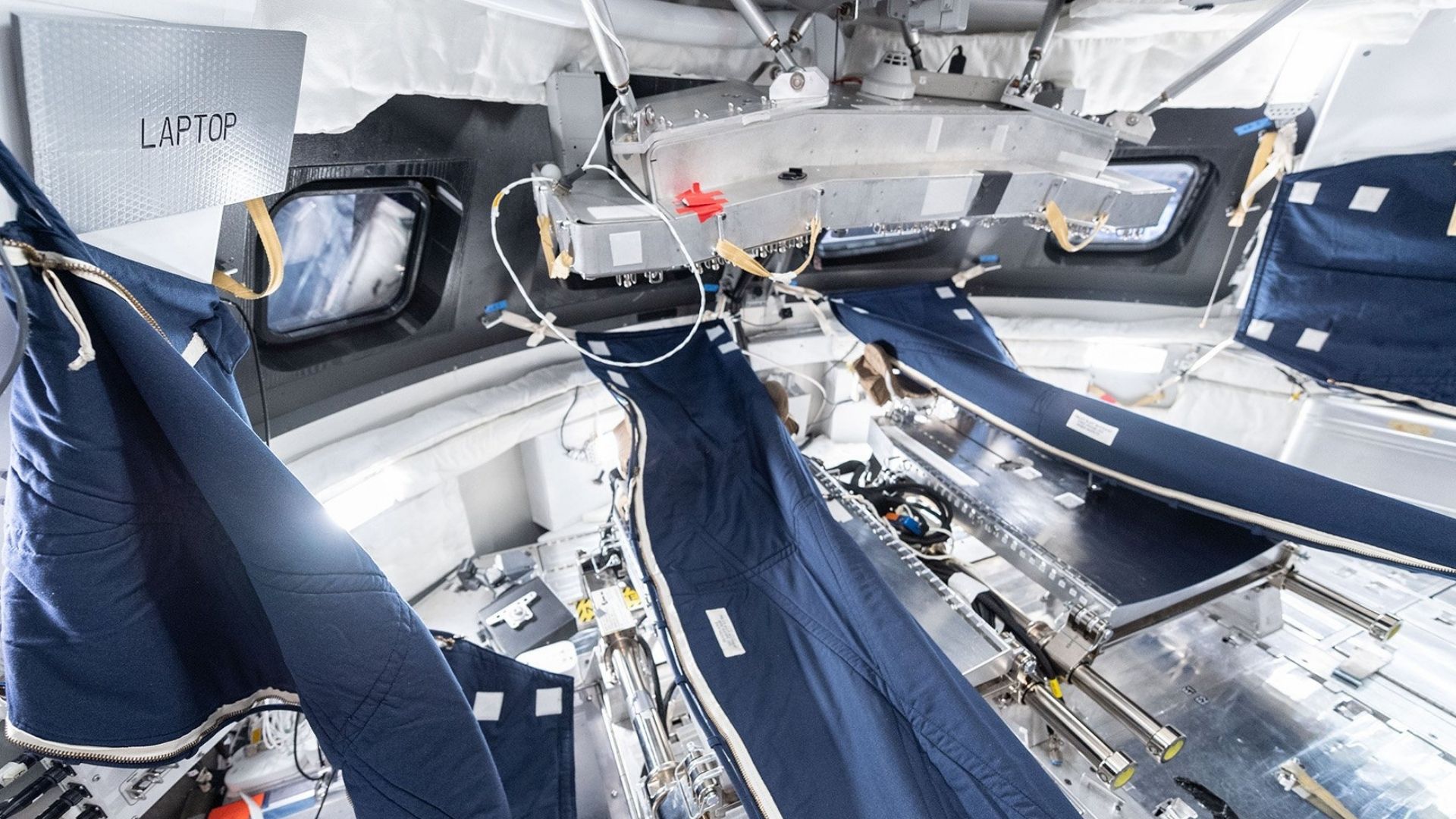How to sleep in space: how and why astronauts struggle for shuteye
“It’s one small step for a man. One giant sleep deficit for mankind”

Have you ever slept under the stars? To see the Milky Way in a dark sky is a bucket-list experience for those of us who live shrouded light-pollution, but actually trying to sleep in space? That’s hard.
Orbiting Earth brings massive disruptions to the sunset-sunrise cycle while gravity makes it difficult to put your head down. That didn’t stop data engineer Chris Sembroski, one of the first civilians in orbit of Earth last month on the ground-breaking SpaceX Inspiration4 mission, comparing sleeping in space to something a lot more casual. “It's like an extended camping trip,” he said before the mission launched on September 15, 2021 an splashed-down three days later. “You're in a camper van with some of your closest friends for three days. You roll out the sleeping bags at night, just like any other camping trip, and just strap yourself in so you don't float into each other during the middle of the night.”
For NASA, sleeping soundly in space is incredibly important. Cue some fascinating tools, techniques and new tech. Here’s everything you need to know about sleeping in space.
What’s so difficult about sleeping in space?
Circadian rhythms are crucial to sleep. Our bodies and its physiological behavior are naturally synced to changes in light in our environment; the rising and setting of the Sun. However, astronauts see multiple sunsets and sunrises as they orbit the Earth every 90 minutes or so. On the ISS it’s 16 of each per day, so sleep has to be at an allotted time and is completely separate to light. Besides, research from Space Shuttle flights suggests that a loss of gravity can also result in altered circadian rhythms and impaired sleep. Astronauts also suffer from anxiety, workload, stress and isolation; tiring, but not sleep-inducing.
Sleeping in space has been a problem since the early days of the space program; Gemini 4’s astronauts James McDivitt and Ed White reported having trouble sleeping in their tiny spacecraft in 1965. During their four-day mission they intended to sleep in alternate four-hour periods, but constant radio communications made it impossible. By Gemini 7 NASA had its astronauts napping at the same time with the radio silent.
Research is frequent and ongoing, but with fewer than 600 humans having reached space in history, it’s an issue that has yet to be put to bed.

Sleeping on the Moon: the 1960s
When Neil Armstrong and Buzz Aldrin’s lunar module Eagle touched-down in the Sea of Tranquillity on July 20, 1969 to become the first humans on the Moon their schedule had them sleep immediately after they landed. In the event neither could; it was cold inside, intensely bright outside, and they were excited about being the first humans to walk on the Moon.
Sign up for breaking news, reviews, opinion, top tech deals, and more.
After they accomplished that the lunar module smelled of the moondust on their boots so Aldrin (on the floor) and Armstrong (laying on the ascent engine cover) closed their helmets and tried to sleep in their spacesuits. “The rest period was almost completely unsatisfactory,” reads Armstrong’s notes in NASA’s report. “Noise, lighting, and a lower-than-desired temperature were annoying (and) the suits were uncomfortably cool … the helmets were removed, but the noise from the glycol pumps was then loud enough to interrupt sleep. The window shades did not completely block out light, and the cabin was illuminated by a combination of light passing through the shades, warning lights, and display lighting.” Aldrin slept fitfully for two hours, Armstrong not at all.

Sleeping on the Moon: the 2020s?
NASA’s next trip to the Moon will also be a bit like camping. The current plan is to put the first woman and the first person of color on the surface of the Moon at its South Pole around 2024. This Artemis 3 mission will see the astronauts travel to the Moon in NASA’s new Orion capsule, which is designed for trips to Mars, too. The spacecraft is designed to hold a maximum of four sleeping bags.
“We have shades to go over all 6 of the Orion windows,” Jason Hutt, Lead for the Orion cockpit at NASA, has said on Twitter. That’s the journey to the Moon. What the astronauts will actually land on the Moon in will be a SpaceX human landing system (HLS), though its design and interior hasn’t yet been revealed. Expect sleeping bags and seat-belts.

Snoozing on the space station
Though NASA has plans to send astronauts to the Moon and eventually to Mars, the business of sleeping in space is mainly concerned with the orbiting International Space Station (ISS).
During their typical posting of six months on the ISS, astronauts experience weightlessness, so there’s no up or down. Consequently, the beds look like they’re positioned vertically. Each astronaut gets a small ‘sleep station’ the size of a telephone booth, and a sleeping bag they strap themselves in to prevent them from free-floating and potentially bumping into equipment while sleeping.

Dozing in a Dragon
Most NASA astronauts now reach the ISS in a SpaceX Crew Dragon capsule, but since they tend to orbit Earth only a few times before docking with the orbiting laboratory there’s rarely a need to sleep. That wasn’t the case with Crew Dragon’s most recent trip to space as part of the Inspiration4 mission. This first-ever all-civilian mission to Earth orbit was primarily staged to raise awareness and funds for St Jude Children’s Research Hospital in Memphis, Tennessee, and to begin “a new era for human spaceflight and exploration”.
However, some spaceflight medical science was also done with research-grade ECG activity, movement, sleep, heart rate and rhythm, blood oxygen saturation, cabin noise and light intensity data collected from the four astronauts. Results are months away, but will be used to help inform future trips to space.

A sleepover in space
Inspiration4 wasn’t actually the first time that astronauts had to sleep in their Crew Dragon. Typically only six or seven astronauts work on the ISS at any one time, but in April 2021 there were 11 astronauts there for a few days after a second Crew Dragon arrived before the first had departed.
Two astronauts slept in the Crew Dragon capsule they’d just arrived in, while seven slept on makeshift beds (constructed from a cargo storage rack) in the gym, the Columbus module and even in the airlock in the US part of the ISS.

Memory foam and ‘sonic massage’
Know any spins-offs from space research? There are a few little things you might have come across – camera phones, wireless headsets, laptops and, yes, Black & Decker’s Dustbuster (it was developed from tech originally designed to collect moondust) – and another one you probably use every night. NASA developed memory foam in the 1970s to help protect astronauts subjected to high G-force in their spacecraft during launch. Although never intended to become part of mattresses back on Earth, this space tech has become common in mattresses.
However, back in 2001 NASA’s National Space Biomedical Research Institute hired neuroscientists at the State University of New York at Stony Brook to study the impacts of the body’s vestibular system – which creates a sense of balance – on sleep. They found that the parts of the inner ear act as accelerometers (like those found in smartphones, smartwatches and action cameras) also help regulate sleep. Think rocking a baby to sleep.
One of those neuroscientists, Seth Horowitz, then created Sleep Genius, a smartphone app that can create sleep-inducing haptic pulse vibrations, using scientifically-composed music, which causes an imbalance in the inner ear. The app has now been complemented by the custom-made Intellibed Sleep Genius Smart Base motorised bed that comes complete with a six-speaker soundbar to administer haptic pulses and ‘sonic massage.’
Spaceflight science is at last beginning to shed some light on how sleep actually works. However, with 150-day missions to Mars on the horizon the quest for rest in space looks set to keep NASA researchers awake at night for decades to come.
This article is part of TechRadar's Sleep Week 2021, our in-depth look at sleep and how to snooze better. We've teamed up with experts in their field to bring you proven sleep techniques and tips to help you drift off easier, and to stay asleep for longer, and have rounded-up the very best sleep kit to transform your bedroom into a den of zen. So from Sunday 31 October to Sunday 7 November we'll be sharing interviews, features and essential buying guides with the aim of helping you to sleep better than ever.
- We've tested and ranked the best mattresses

Jamie is a freelance tech, travel and space journalist based in the UK. He’s been writing regularly for Techradar since it was launched in 2008 and also writes regularly for Forbes, The Telegraph, the South China Morning Post, Sky & Telescope and the Sky At Night magazine as well as other Future titles T3, Digital Camera World, All About Space and Space.com. He also edits two of his own websites, TravGear.com and WhenIsTheNextEclipse.com that reflect his obsession with travel gear and solar eclipse travel. He is the author of A Stargazing Program For Beginners (Springer, 2015),